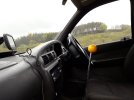Are you meaning Freelander 1 or 2?
What are you wanting from the vehicle? Assuming you meant Freelander 1. The youngest one is 17 years old, so a vehicle of this age will likely need things doing to it.
The Freelander is a jack of all trades. It goes quite well on the road, but still not as well as a car. I don't like the term Hippo, not really sure where it comes from. But it sort of sums up the handling IMO. They don't feel like a 4x4 on the road, not like a live axle 4x4 does. But they do feel a bit squishy, leany and wallowy. But undeniable car like. They certainly aren't bad on the road and maybe my description doesn't flatter. But if you want something sporty and sharp to drive, they are not it. They are however reasonable comfortable and accomplished on tarmac.
Off road is the same mixed bag. In some respects they are quite capable, in others severely lacking. Being all independent suspension they ride rough ground quite well. But they have low ground clearance for a 4x4 and poor departure/approach/breakover angles. The all independent suspension also lacks suspension flex. Meaning wheels in the air a lot. To counter this they have traction control. It is a very good traction control, but it is a Gen 1 version of off road traction control and isn't as quick to react as modern systems.
The traction control does give them ability off road you may not think a crossover SUV should be capable of. And certainly in 1998 they were well ahead of the game compared to any rivals like the Rav4 or Honda CR-V which had no form of traction control at all.
There biggest issue off road is a lack of low range. An automatic gets around this to an extent, but you can't avoid the fact that for some off road situations they are a lot of work to drive or just unsuitable for the terrain. But they can get you further than a lot of vehicles. If it is just a muddy track, wet grass field or a snow covered lane. Then they are in their element.
Early models the TCS and HDC were optional I believe. They are a must if you plan to venture off the beaten path. Latter models have these as standard.
Overall I'd say they are good vehicles, the interior is decent if a little 1990s plastic looking. The seats are a bit hard and not that comfy IMHO. And I have never gelled with the driving position. I think they are designed for a tall gangly person with long legs. I'm short and find I end up with the steering wheel under my chin once I've moved the seat to a position where the clutch pedal is comfortable. Oddly the gearstick is also quite a reach, you have to dip your shoulder to grab it and change gear.
Rear seating space is quite good. Boot ok, although given the overall dimensions and wheelbase you can't help but wonder how a Range Rover of Discovery 1 have such bigger boots compared to the Freelanders fairly small one.
Engine wise, the 1.8 petrol is a lovely engine and works very well with the platform. Just read up on the usual head gasket issues. They shouldn't be a reason to avoid, as they are solvable in most cases and it is a really nice engine.
The early diesel is the 2.0 L Series engine. Another really nice engine, although only offered in low output form in the Freelander. This was replaced with the BMW Td4 engine later on. Arguably the L-Series is the nicer engine, but the Td4 came with quite a bit more power in standard form, so the Td4's do go better.
The V6 is nice, but only comes with an auto box and drinks very heavily as a result.
Rust can be an issue, but should be easy to spot. Plenty of tidy ones still about.
The biggest issue is probably the drivetrain. They use a clever viscous unit to enable 4wd. Which again is arguably better than some latter models. However, if this unit goes stiff (which they do) and is ignored by the owner. It can completely wreck many expensive components. I would avoid any converted to 2wd like the plague. They should have matching tyres all round in similar condition.



